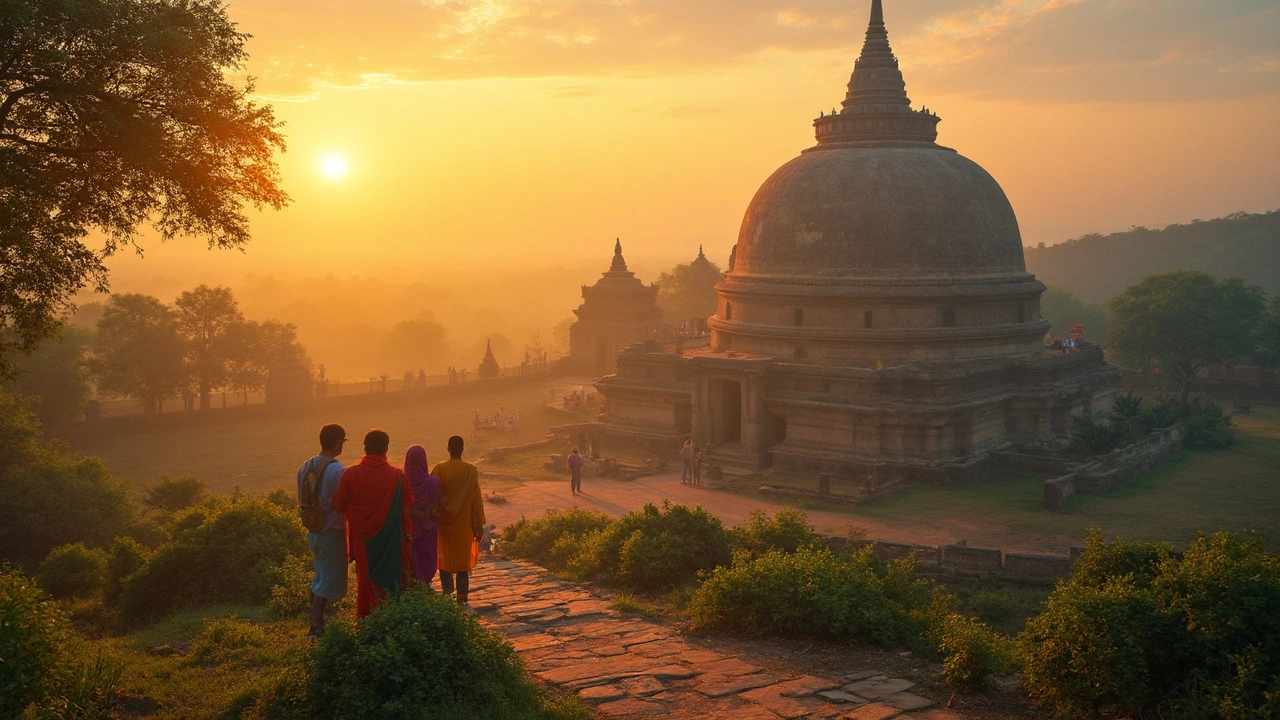India's Oldest Landmark – What Makes It Special?
India is a playground of history. If you ask any traveler, the first thing they want to see is the oldest landmark that still stands. Think of a place where stone walls have heard more than a thousand years of chanting, battles, and festivals. In this guide, we’ll break down why these ancient sites matter and how you can experience them without getting lost in jargon.
Why the Oldest Landmark Matters
When you stand in front of an 2,000‑year‑old temple, you’re not just looking at a building – you’re touching a story. The oldest landmark often tells us how early societies lived, what they believed, and how they built things that still hold up. For example, the stone steps at Mahabalipuram show the engineering skill of the Pallavas, while the carvings at Bhimbetka capture prehistoric art that predates writing. These sites also boost local economies because tourists bring money, and they keep traditions alive through festivals and rituals.
Top Must‑See Ancient Landmarks
1. Sanchi Stupa (Madhya Pradesh) – Built around 300 BC, this is one of the world’s earliest stone structures dedicated to Buddhism. The four great gateways are covered in reliefs that describe the life of the Buddha. You can walk around the circular walkway and get a clear view of the intricate stone work.
2. Mahabalipuram Shore Temple (Tamil Nadu) – These sea‑facing shrines were carved from a single granite rock in the 8th century. The temple still hosts daily puja, so you get a mix of history and living culture.
3. Bhimbetka Rock Shelters (Madhya Pradesh) – Dating back 100,000 years, these caves hold the oldest known rock art in India. The paintings are simple, but they give a glimpse into the lives of early hunter‑gatherers.
4. Hampi (Karnataka) – Though known for its Vijayanagara empire ruins, some parts of Hampi go back to the 6th century. The massive stone chariot and the Virupaksha Temple show how architecture evolved over centuries.
5. Khajuraho Temples (Madhya Pradesh) – Built between 950 and 1050 AD, these temples combine intricate carvings with a strong structural design. They’re also a UNESCO World Heritage Site, which means they’re protected for future generations.
Each of these landmarks offers a different slice of Indian history. Pick one based on your interests – art, spirituality, engineering, or pure adventure.
Now, let’s talk logistics. Most ancient sites are reachable by train or bus, and many have nearby guest houses or budget hotels. Arrive early to avoid crowds, especially during festivals when locals gather for prayers. Carry a bottle of water, wear comfortable shoes, and bring a hat – the Indian sun can be unforgiving.
If you’re a photography fan, the best light hits these monuments during the golden hour – just after sunrise or before sunset. Respect any “no‑flash” signs; many temples still have delicate frescoes that can fade under bright light.
Finally, remember that the oldest landmark isn’t just a tourist spot. It’s a living piece of culture. When you hear a local chant or see a festival happening nearby, you’re witnessing a tradition that’s been alive for centuries. Take a moment to listen, ask respectful questions, and you’ll walk away with more than a souvenir – you’ll have a story that connects you to India’s ancient soul.
